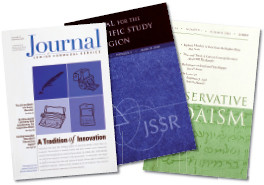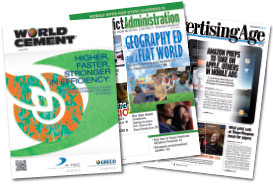Is the source scholarly, popular, or for a trade group?
Scholarly sources (whether books or articles) are written by and for experts in a field of study, frequently professors or academic researchers. They can be challenging to read and understand because they use the language of the field and terminology that may be unfamiliar to those outside the discipline, but they are considered reliable because the contents are written by specialists and peer-reviewed (reviewed by specialists) before publication. Scholarly sources also tend to delve deeply into a subject, often a narrowly defined subject. Scholarly sources may be published by a university press, a scholarly organization, or a commercial publisher (such as Kluwer Academic or Blackwell). Though scholarly sources may provide an overview of the subject, they generally focus on a specific issue or argument and generally contain a great deal of original research.
In contrast, popular sources are written to entertain and educate the general public. For the most part, they are written by journalists who have conducted research and interviewed experts. They may include original research, especially on current events or emerging trends. Mainly, though, they report on and summarize original research and are written for interested, nonspecialist readers.
Of course, popular sources range widely along the reliability spectrum. Highly respected newspapers and magazines, such as the New York Times, the Guardian, the Economist, and Harper’s Magazine, publish original research on news and culture. These newspapers and magazines check facts carefully and are often considered appropriate sources for research projects in entry-level courses (although you should check with your instructor to find out her or his expectations). Magazines that focus on celebrity gossip, such as People and Us Weekly, are unlikely to be considered appropriate sources for a college-level research project.
Trade publications—periodicals that report on news and technical advances in a specific industry—are written for those employed in the industry and include such titles as Advertising Age, World Cement, and American Machinist. Some trade publications may be appropriate for college research projects, especially in the sciences, but keep in mind that these publications are intended for a specialist audience and may focus on marketing products to professionals in the field. Table 25.1 summarizes some of the important differences between scholarly journals, popular magazines, and trade publications.

|

|

|
| Scholarly Journals | Popular Magazines | Trade Publications |
|---|---|---|
| Journals are usually published 4 to 6 times per year | Magazines are usually published weekly or monthly. | Trade publications may be published daily, weekly, monthly, or quarterly, depending on the industry covered. |
| Articles are usually written by scholars (with PhD or academic affiliations after their names). | Authors of articles are journalists but may quote experts. | Articles may be written by professionals or by journalists with quotes from experts. |
| Many articles have more than one author. | Most articles have a single author. | Authors of articles may or may not be named. |
| In print journals, the title page often appears on the cover, and the covers frequently lack artwork. | Photographs, usually in color, appear on the covers of most print magazines. | Photographs, usually in color, appear on the covers of most print trade publications. |
| Articles may include charts, tables, figures, and quotations from other scholarly sources. | Articles frequently include color pictures and sidebars. | Articles frequently include color pictures and sidebars. |
| An abstract (summary) of the article may appear on the first page. | A headline or engaging description may precede the article. | Headlines often include names or terms familiar only to industry insiders. |
| Most articles are fairly long—5 to 20 pages. | Most articles are fairly short—1 to 5 pages. | Most articles are fairly short—1 to 5 pages. |
| Articles cite sources and provide a bibliography (works-cited or reference list). | Articles rarely include a list of works cited or references but may mention or quote experts. | Articles rarely include a list of works cited or references but may mention or quote experts. |